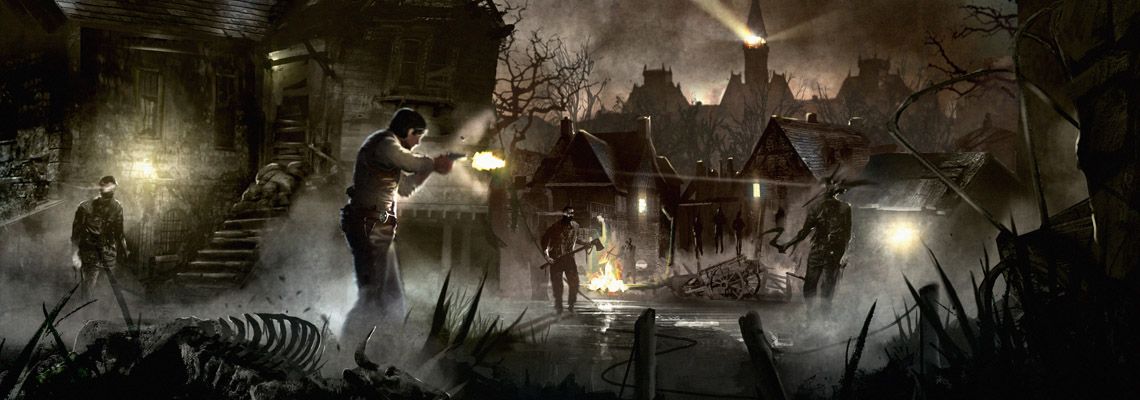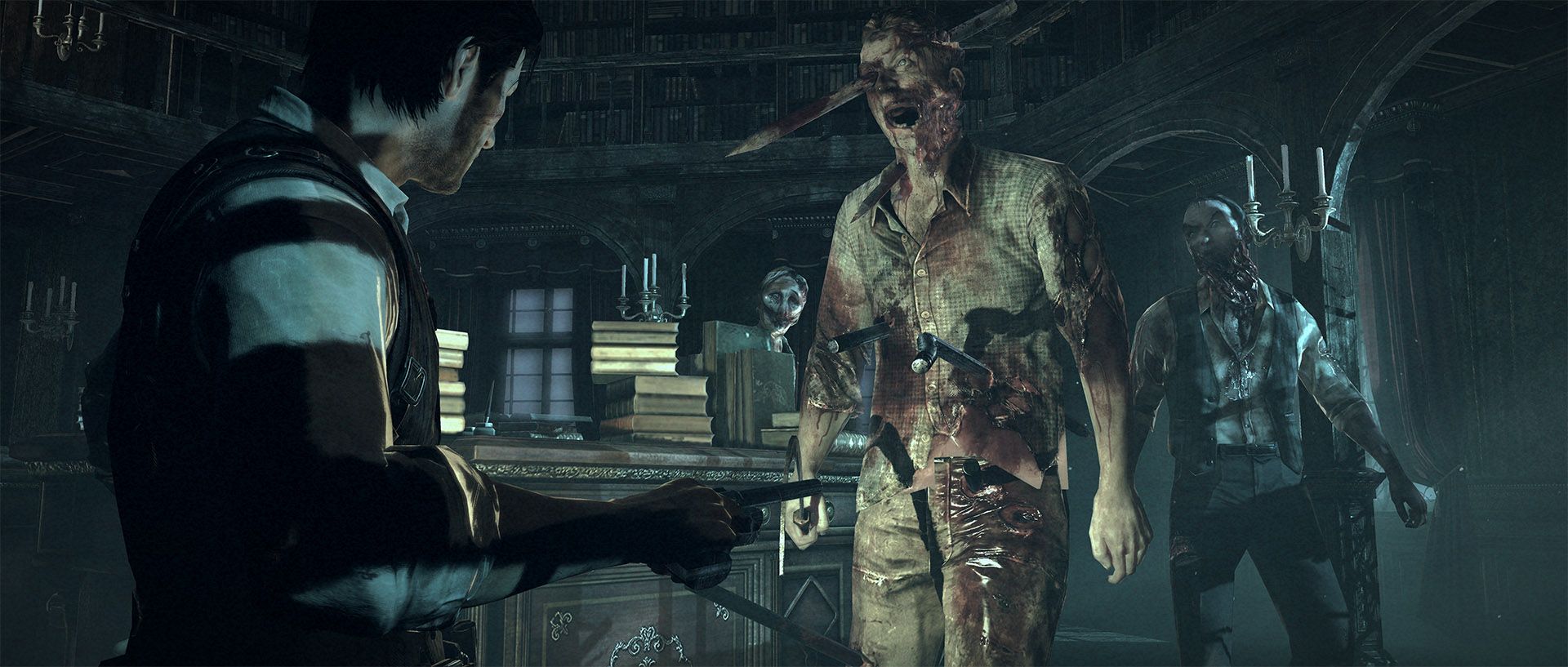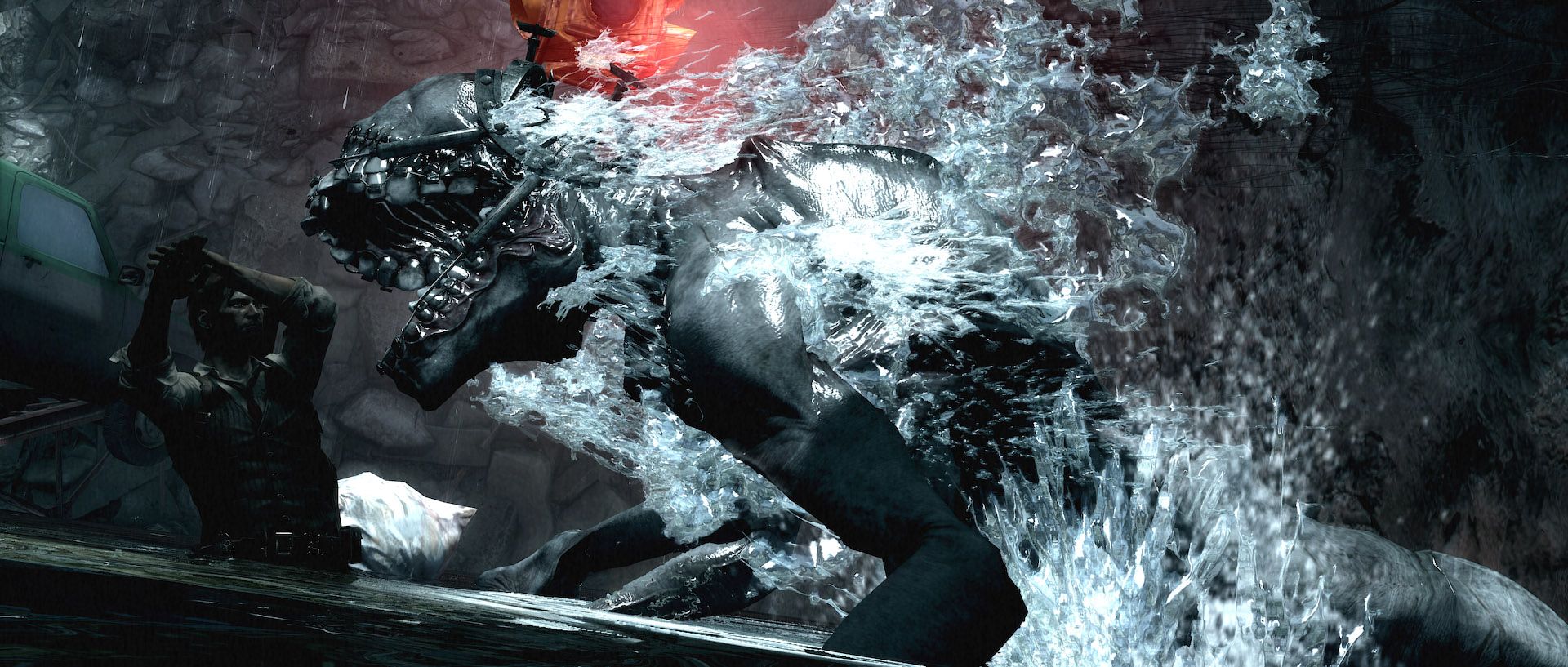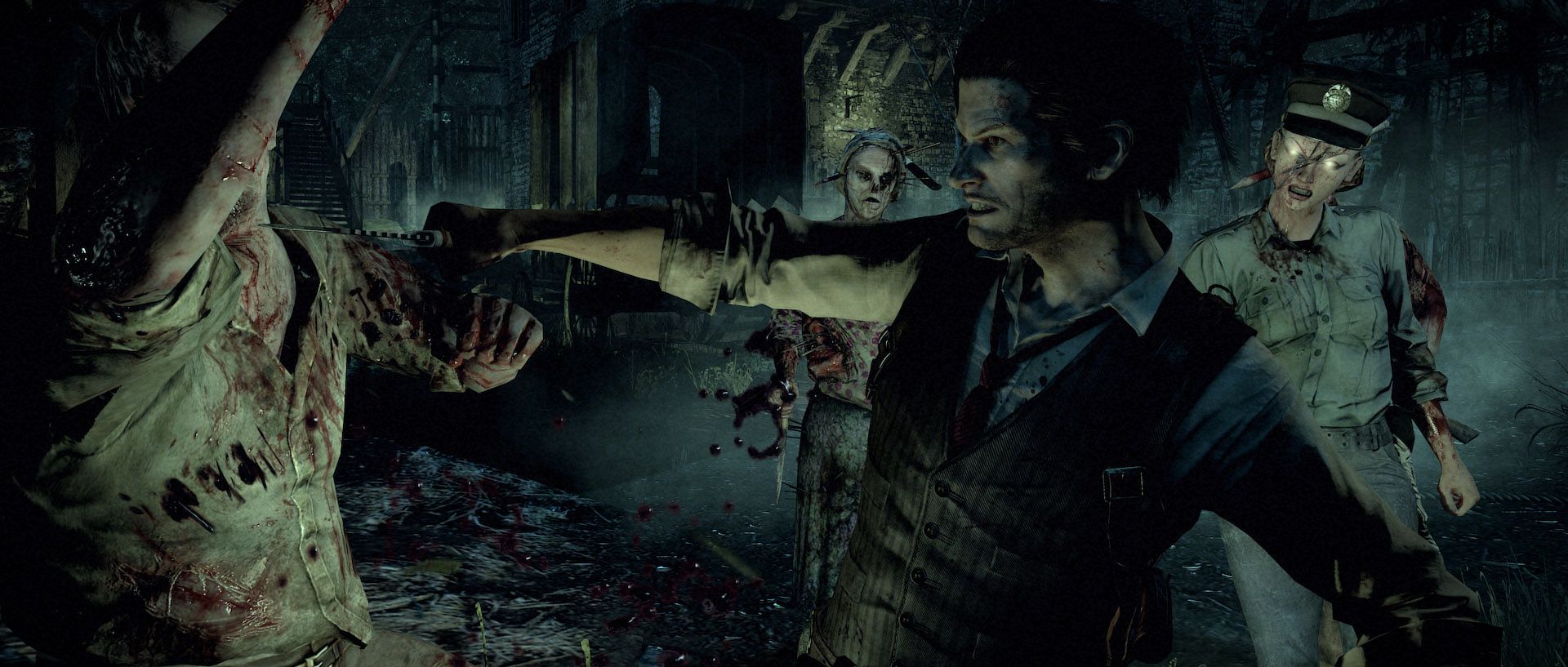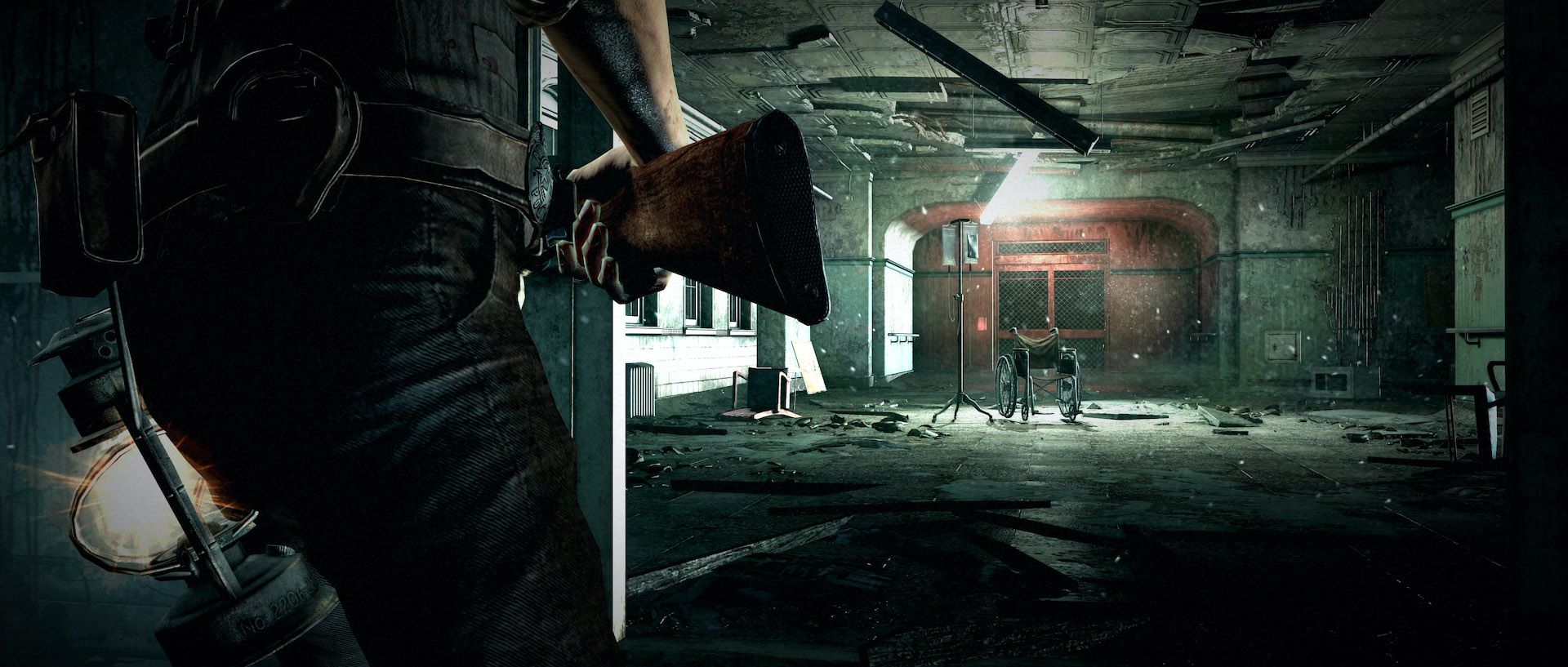Directors are undervalued in this industry. While looked to as a clear indicator of quality in the motion picture business, their role in game development tends to be minimized or outright ignored. Case in point: Shinji Mikami. Relinquishing his director duties after Resident Evil 4, the series has never been the same. Resident Evil 5 was a departure from the tone of its predecessors, while Resident Evil 6 was a critically derided leap away. While some chalked this up to franchise fatigue or modern sensibilities taking over, The Evil Within proves that everything that was Resident Evil was Shinji Mikami.
In The Evil Within, players take the role of detective Sebastian Castellanos who arrives at a crime scene with his partners Joseph Oda and Julike Kidman only to be knocked unconscious. He awakens to find that the crime scene has been filled with horrible creatures trying to murder him at every turn. Barely escaping with his life, he’s whisked inside an ambulance and with a few new acquaintances, racing out of a city crumbling into itself. Crashing into the woods, Sebastian finds that his nightmare is not over and has to contend with more murderous creatures while attempting to stay alive, locate his partners and make sense of what’s happening.
Fittingly named Psycho Break in Japan, The Evil Within deals in psychology, continually making the player question whether what happening is real, the delusion of a mad man or perhaps something more sinister entirely. Nowhere is this more clear than in the design of the world itself. Unlike most survival horror games, The Evil Within is a linear experience broken up into fifteen chapters. Instead of naturally leading into the next area, chapter breaks sees Sebastian being transported to entirely different locales — most of which are horrifying in nature, including abandoned hospitals, factories, castles, dark woods and practically any other scary setting that comes to mind. Although I’m partial to survival horror games that present a singular world, this structure allows both for varying locales that wouldn’t otherwise be possible as well as hallucinogenic experience that questions reality at every turn.
The Evil Within is a third-person survival horror game with a focus more on survival than horror. Instead of simply coming up with Rube Goldberg scenarios to spook players or constant jump scares, a world is presented where the scariest thing is running out of ammo and having a mob of bloodthirsty creatures on the other side of a door. Supplies are scarcer than almost any major survival horror game to come before it and there will be frequent occasions where they will diminish and perfect execution will be necessary to further continue. With that said, there are two difficulty modes available at the outset: Casual and Survival (with Nightmare and Akumu unlockable). These somewhat confusingly named modes will likely have many players choosing the later, but beware: Survival does not equate to “Normal.” Enemies will take multiple hits to kill, will bite huge portions of health and supplies become even more scarce. If that weren’t enough, puzzles are at their most difficult and will take patience to figure out. Although experienced genre fans will be able to work their way through, many will find themselves out of supplies and low on health fairly early in the proceedings. This will leave many at a wall where the only choice will be to restart the level or drop the difficulty to casual. As such, all but the most hardcore should run through their first playthrough on Casual, as even on the easiest difficulty, quite the challenge is presented.
That being said, The Evil Within is scary. Although filled with zombie-like creatures, it’s at its core a psychological horror like Silent Hill or Clock Tower. Playing it in dark with headphones or surround sound will have players constantly on edge with a prevailing sense of dread. After all, there’s nothing more scary than feeling helpless and The Evil Within does a good job simulating that.
Throughout the campaign, access is gained to weaponry including a handgun, shotgun, sniper rifle, grenades and more. The most unique item is the Agony Crossbow which is equipped with multiple types of ammunition such as Freeze, Explosive, Shock, Flash and Harpoon Bolts. Rounds are either found scattered around environments or created with parts gathered up from disarming traps littered around. These are key in many boss battles as their various effects can be key to standing a chance
Unfortunately, The Evil Within’s biggest weakness stems from this somewhat robust arsenal. The first couple of chapters allows almost all combat to be avoided. After that, however, more and more emphasis is placed on action. Most chapters feature substantially more combat than stealth and they almost all have portions where players are forced into combat as it’s the only way to progress. While the limited supplies makes these situations more tense than in action games and puts an emphasis on survival, stealth is almost a complete afterthought. While resource management is one of the most crucial survival tactics, remaining hidden is just (if not more) important in circumstances with encroaching danger, so it’s disappointing that the game can’t be completed remaining cloaked in darkness.
While Mikami does give into some of the upped weaponry of Resident Evil 4, he doesn’t let it go to waste on generic battles. As previously mentioned, almost every chapter is removed from the others in terms of setting and the enemies faced also tend to be quite different — especially the bosses. Nearly every chapter features an end boss that is almost guaranteed to use up what little ammunition is remaining. Not only is character design varied (from spider ladies to giant mutant dogs), but combat is often combined with puzzle-solving. In one scenario, for instance, a boss called Boxman (literally a giant with a safe for a head) must be fended off while three steam valves are released before suffocating. By putting a twist on the typical boss formula, it keeps The Evil Within distanced from action titles.
Production values are also a strong-suit. Developer Tango Gameworks assembled an impressive cast including Anson Mount (best known for portraying Cullen Bohannon on TV’s Hell on Wheels), Jennifer Carpenter and Jackie Earle Haley to voice the protagonists and all put in a commendable effort (although the dialogue isn’t the best, it’s more than made up for by the tone). Music is used sparingly with the most effective instance being Clair de Lune indicating save points. The usage of a classical composition in such a horrifying environment is both ironic as well as eerily beautiful, signifying asylum in a literal asylum, where players are transported through a mirror to an abandoned mental institution where skills can be leveled up in addition to saving. Presented in a 16:9 widescreen aspect ratio with a heavy grain structure, The Evil Within is meant to simulate a cinematic experience. It accomplishes this at the cost of high def clarity, which is an impressive tradeoff in an era of arguments over slight resolution variations.
Closing Comments:
The Evil Within marks Shinji Mikami’s triumphant return to horror, cementing his status as a mastermind of the genre. Smartly aiming for psychological horror over cheap jump scares, it gets under the skin and effects the psyche. Unfortunately, it falls into the modern trappings of boasting too much firepower (Sebastian can look more like Rambo than a detective) at the cost of stealth and intelligence. Still, this is a bold and seductive experience that is seen too infrequently from major publishers these days. In an age where once great franchises like Silent Hill and Resident Evil are falling into self-parody, The Evil Within is a breath of fresh air that deserves to be inhaled by every survival horror fan.
Version Reviewed: PlayStation 4

